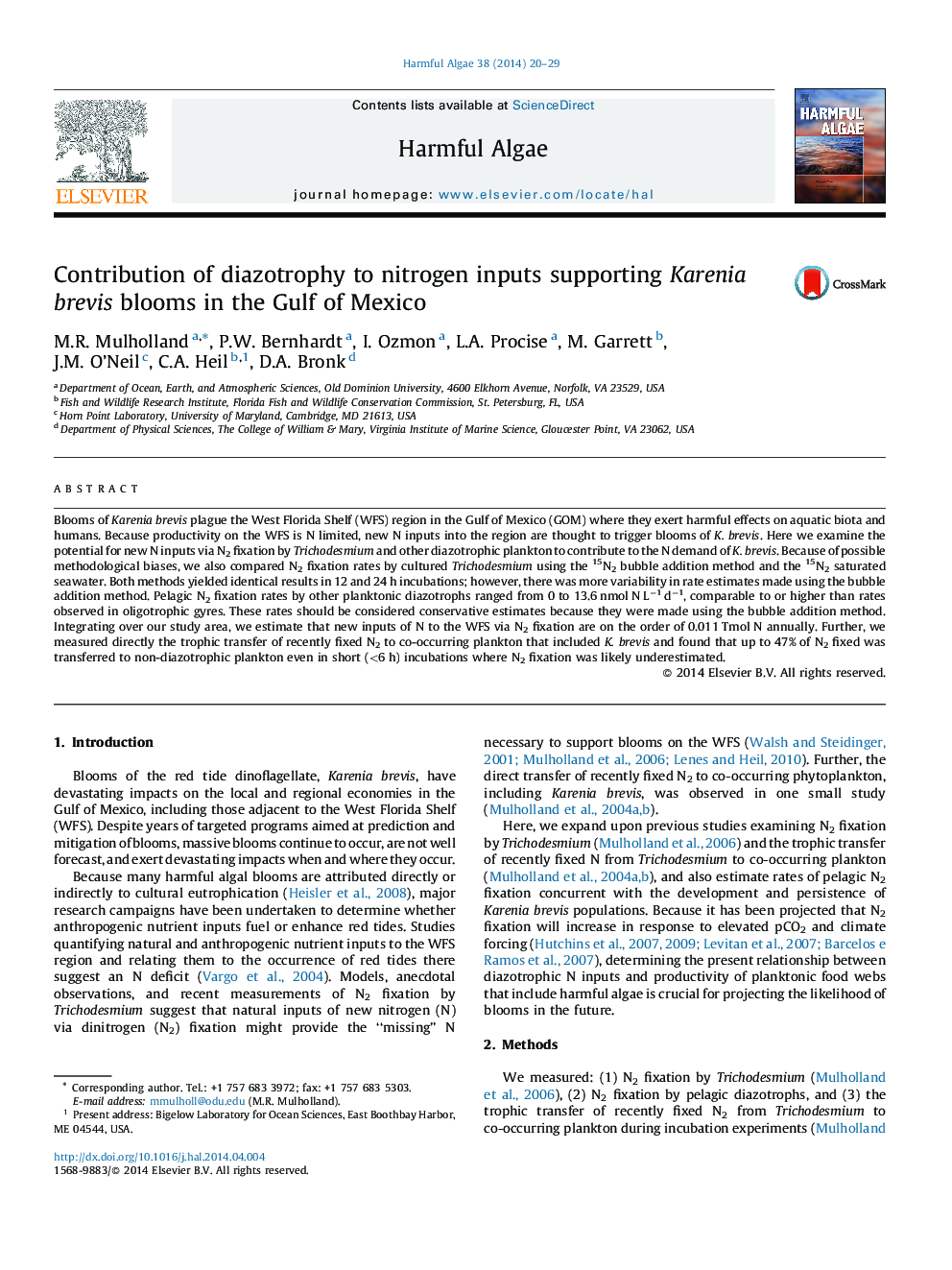| Article ID | Journal | Published Year | Pages | File Type |
|---|---|---|---|---|
| 4545311 | Harmful Algae | 2014 | 10 Pages |
Abstract
Blooms of Karenia brevis plague the West Florida Shelf (WFS) region in the Gulf of Mexico (GOM) where they exert harmful effects on aquatic biota and humans. Because productivity on the WFS is N limited, new N inputs into the region are thought to trigger blooms of K. brevis. Here we examine the potential for new N inputs via N2 fixation by Trichodesmium and other diazotrophic plankton to contribute to the N demand of K. brevis. Because of possible methodological biases, we also compared N2 fixation rates by cultured Trichodesmium using the 15N2 bubble addition method and the 15N2 saturated seawater. Both methods yielded identical results in 12 and 24 h incubations; however, there was more variability in rate estimates made using the bubble addition method. Pelagic N2 fixation rates by other planktonic diazotrophs ranged from 0 to 13.6 nmol N Lâ1 dâ1, comparable to or higher than rates observed in oligotrophic gyres. These rates should be considered conservative estimates because they were made using the bubble addition method. Integrating over our study area, we estimate that new inputs of N to the WFS via N2 fixation are on the order of 0.011 Tmol N annually. Further, we measured directly the trophic transfer of recently fixed N2 to co-occurring plankton that included K. brevis and found that up to 47% of N2 fixed was transferred to non-diazotrophic plankton even in short (<6 h) incubations where N2 fixation was likely underestimated.
Related Topics
Life Sciences
Agricultural and Biological Sciences
Aquatic Science
Authors
M.R. Mulholland, P.W. Bernhardt, I. Ozmon, L.A. Procise, M. Garrett, J.M. O'Neil, C.A. Heil, D.A. Bronk,
